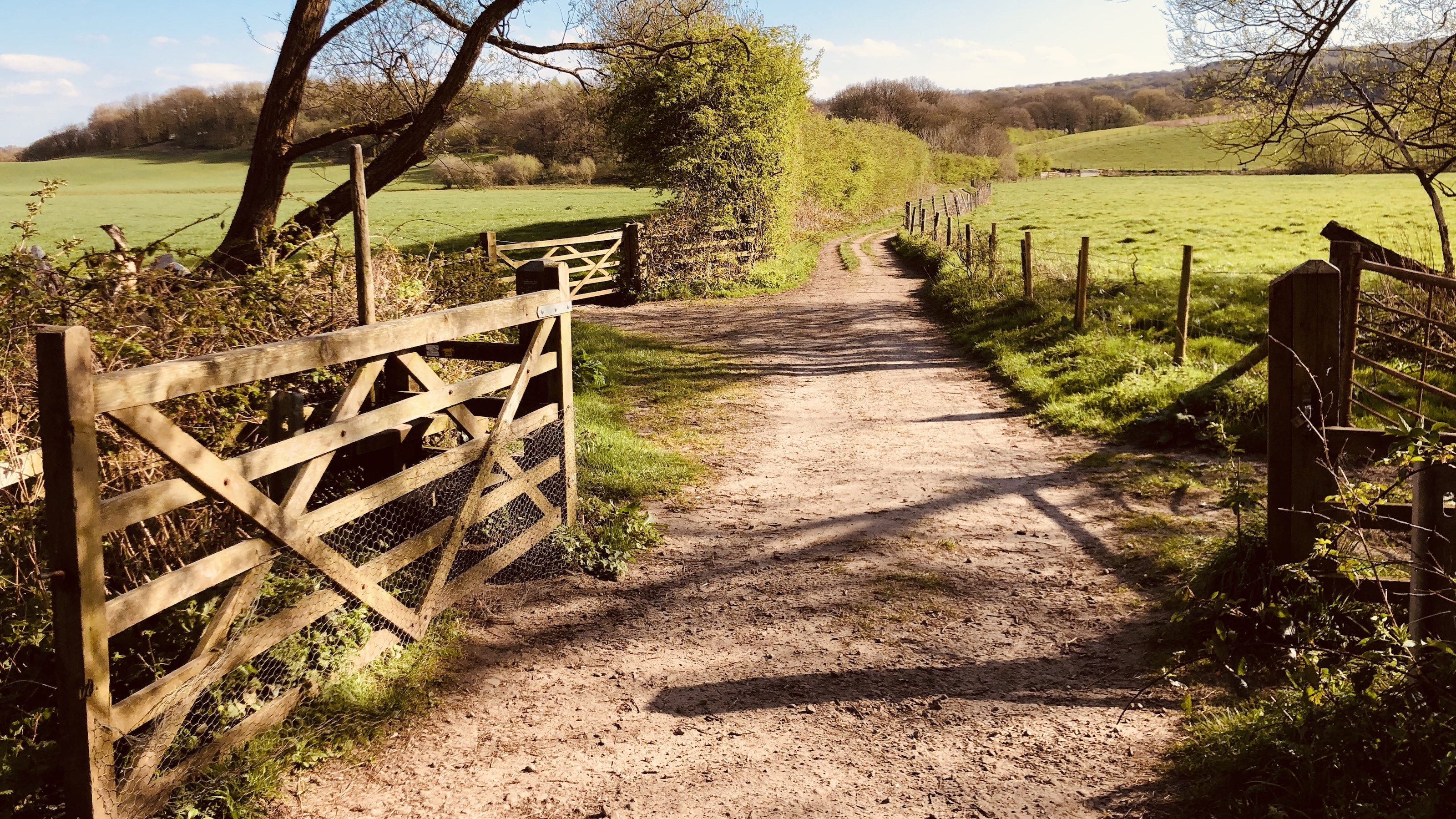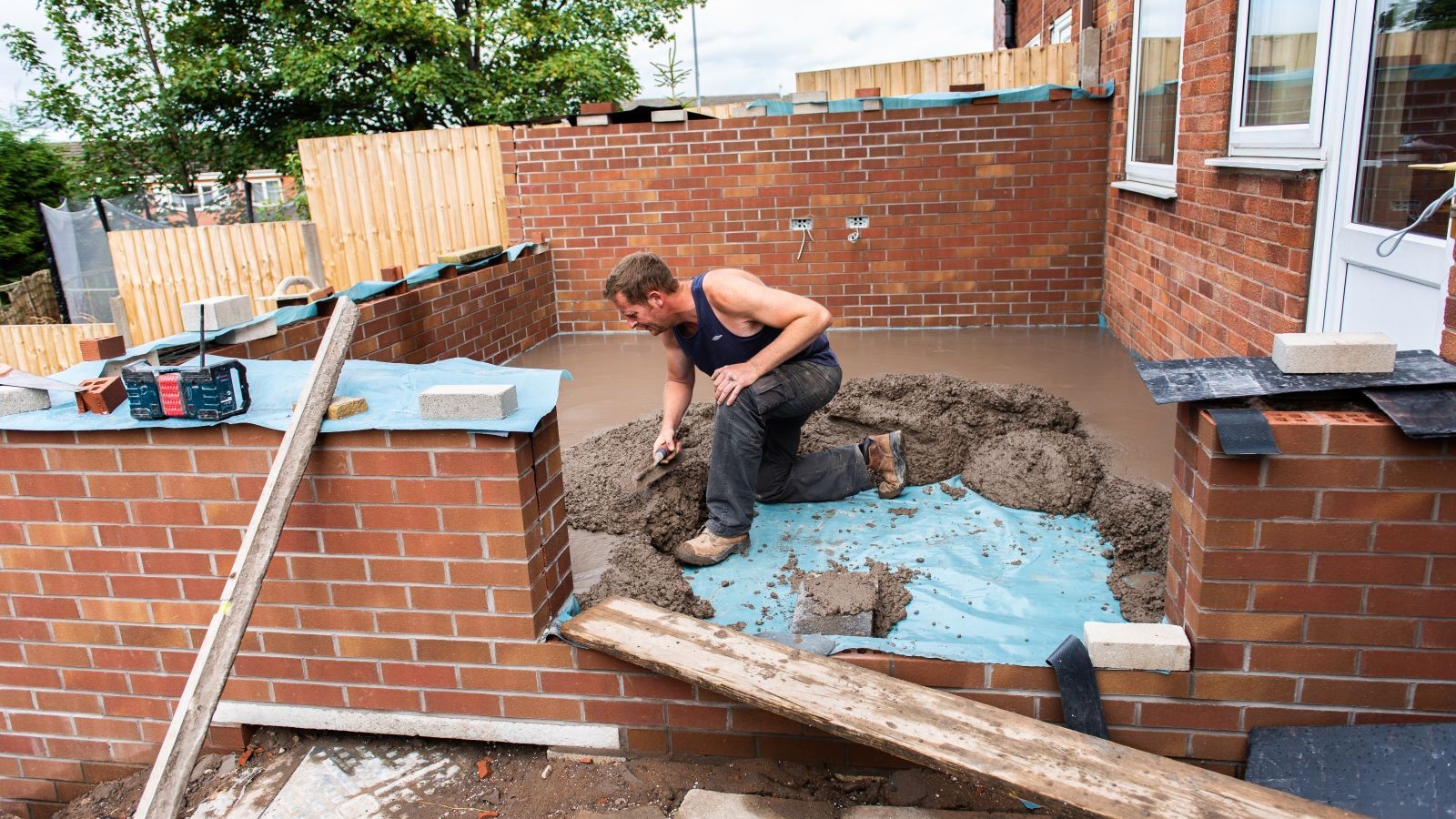What to do if you have a right of way over your building plot
Discover the implications of a right of way over your self-build plot and the options open to you

If you have a right of way over your building plot, it is vital to understand the implications. While in some circumstances it could be ended, it might instead require you to change your self-build plans.
If you’re buying a house, you can find out that there’s a right of way over the property, and you could encounter the same issue when purchasing a building plot. In either scenario, the issue can’t be ignored.
Below, we’ve asked legal experts to explain what types of right of way over a building plot exist and the courses of action open to you, so you can avoid disputes and make the most of the land you’re buying.
What does a right of way over your plot mean?

Subscribe to Plotfinder.net to access over 15,000 building plots and properties that could become your next project
While the nature of a right of way is generally understood, it’s crucial to know what it means in law.
“A right of way, in particular, over a building plot is a right granted to pass and repass over the land,” explains Claire Langford, head of residential conveyancing at Roythornes Solicitors.
“The right may include a right to cross on foot, with animals, with or without vehicles,” she adds.

The head of conveyancing at Roythornes Solicitors, Claire has over 25 years of experience in the legal sector and has specialised in residential conveyancing for the past decade. A fellow of the Chartered Institute of Legal Executives since 2016, Claire has extensive expertise across a wide range of property matters, including freehold and leasehold transactions, both registered and unregistered land, as well as remortgages, transfers of equity, and separate representation work.
What types of right of way are there?
There are two main types of rights of way: private and public.
“Rights of way can be private rights, where one example could be giving your neighbour exclusive permission/access to cross your drive to put their bin out every week,” explains Claire Langford. “This is an agreement between the two property owners.”
Public rights of way, on the other hand, can be used by anyone. “A public right of way is a defined route over land that everyone can legally use at any time they wish to do so,” Claire says.
“Rights of way can arise through formal deeds or grants, but they may also be established through long-standing, uninterrupted use (known as a prescriptive right),” she notes. “For example, if Farmer Giles has driven his tractor daily across your land for 20 years without challenge, he could acquire a right of way.”
What are the implications of the different types of rights of way?
When you’re planning a self-build, you need to understand how the existence of the different types of rights of way could affect your project.
“A private right of way is typically granted to a neighbour, allowing them access across your land to reach their own property,” says Andrew Boast, CEO of SAM Conveyancing. “These are usually recorded in the title deeds and can severely limit where you can position your new home.
“Blocking or attempting to alter a private right of way without the agreement of the affected party could result in legal disputes, potentially delaying your project and leading to costly legal action. Even if a right of way isn’t actively used, if it has existed for some time, the beneficiary may still have the right to enforce it.”
If a public right of way like a footpath or bridlepath over your building plot exists, this is even more difficult to change or remove, Andrew explains. “These are legally protected, and landowners cannot block or divert them without following a formal legal process. If your self-build plot has a public right of way running through it, this could affect privacy, security, and even the value of your finished home. Councils are unlikely to grant planning permission for a build that interferes with a public route, and the presence of a footpath could restrict your ability to fence off your land.”
And if there’s a prescriptive right of way, be aware that “your build plans may have to accommodate an existing route or include alternative access solutions”, Andrew says.

Andrew Boast is the CEO, executive director and co-founder of SAM Conveyancing, and has over 23 years of experience in the home and conveyancing market. Andrew is an accomplished expert in his field, guiding thousands of clients through the complex process of buying a home both personally and through his teams of expert solicitors, surveyors and mortgage advisers at SAM Conveyancing.

How might you find out a right of way over your plot exists?
A right of way can become apparent from different sources. “Rights of way which are documented in a deed or grant are typically found in title documentation to the land,” says Claire Langford. “Title documentation can be obtained by both the public and professionals through HM Land Registry. HM Land Registry maintains a central public record of land ownership and all matters affecting the land and can be downloaded for a minimal charge.
“If the land is unregistered, however, the original deeds (bundle of paper documents) will not be with HM Land Registry but could be located at a bank, building society, solicitors or even within the family documents or in a safe,” she says.
“Public rights of way are generally recorded with the relevant local authority,” she adds.
Legal checks before a purchase of a plot are crucial. “A solicitor can review the title deeds, definitive maps, and local authority records to identify any rights of way that could impact your build,” says Andrew Boast. “Failing to do so could result in expensive disputes, planning permission refusals, or legal obligations to maintain public or private access routes.”
What are your options if there is a right of way over your plot?
Whether the conveyancing process identifies a right of way over a plot and you’re considering whether to go ahead, or it’s already yours, be aware of the options that exist in this scenario.
Private right of way
“For a private right of way, negotiation is often the most straightforward solution,” says Andrew Boast. “If a neighbour benefits from access across your land, you may be able to agree on an alternative route that allows you to build without obstruction. Any changes must be agreed upon in writing and legally documented to avoid future disputes.
“In some cases, you may be able to purchase the rights from the benefiting party, effectively extinguishing the right of way altogether,” he adds. “However, if a neighbour refuses to agree to modifications, you may have no choice but to design your build around the existing access route.”
Public right of way
The options are more limited if the right of way is a public one, Andrew Boast explains. “You cannot block or restrict access without applying for a legal diversion or extinguishment order through your local council,” he explains. “Diversion orders under the Highways Act 1980 allow for a footpath to be rerouted, but only if an equally convenient alternative is provided. Councils will only approve such applications if the proposed diversion does not disadvantage the public, and the process can be lengthy and costly.
“Successfully extinguishing a public right of way is even more challenging, as you would need to prove that it is no longer needed,” he says. “Even if a path is rarely used, councils are unlikely to remove a public right of way unless there is strong justification for doing so.”
If altering or removing the right of way is not possible, you may need to design your self-build to accommodate it instead, Andrew says. “This might mean incorporating a designated passageway within your plot or adjusting your layout to ensure access is not obstructed,” he explains. “In some cases, it may be possible to apply for additional planning measures, such as fencing or hedging, to improve privacy and security while still allowing access.”
“Before committing to a self-build plot with a right of way, it’s essential to seek legal advice to understand the full implications,” says Andrew Boast. “If the right of way presents significant challenges, reconsidering the purchase or adjusting your build plans may be the best course of action.”

Get the Homebuilding & Renovating Newsletter
Bring your dream home to life with expert advice, how to guides and design inspiration. Sign up for our newsletter and get two free tickets to a Homebuilding & Renovating Show near you.
Sarah is a freelance journalist and editor writing for websites, national newspapers, and magazines. She’s spent most of her journalistic career specialising in homes.
She loves testing the latest home appliances and products, and investigating the benefits, costs and practicalities of home improvement. She is an experienced renovator and is currently remodelling the ground floor of her new home.
She was Executive Editor of Ideal Home and has worked for Your Home and Homes & Ideas. Her work has published by numerous titles, including The Guardian, channel4.com, Houzz, Grand Designs, Homes & Gardens, House Beautiful, Homes & Antiques, Real Homes, The English Home, Period Living, Beautiful Kitchens, Good Homes and Country Homes & Interiors.
